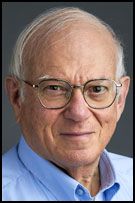Neal Hulkower: Reject rank choice voting; a better option is out there

About the writer: McMinnville resident Neal Hulkower holds a B.A. in astronomy and an M.S. and Ph.D. in applied mathematics from Northwestern University. He taught mathematics at several colleges and universities before retiring. Now serving as an independent researcher, his current interests include decision analysis. He has published numerous popular articles, along with numerous technical studies in peer-reviewed journals, on a range of subjects that includes the Borda count.
Voting is easy when there are just two candidates. Our current plurality voting method works just fine for that.
But things get complicated when there are more choices.
For centuries, various voting methods have been developed with the goal of producing outcomes best reflecting the will of the electorate. But which method to use is absolutely critical.
Professor Don Saari of the University of California at Irvine, stressed “... the winner of an election may more accurately reflect the choice of a decision procedure rather than the views or preferences of the voters.” How then are we to choose?
Recognizing the problems with plurality voting are egregious, the Oregon legislature has placed Measure 117 on the ballot. It would move Oregon to a ranked choice approach known under the acronym RCV.
While asking voters to order the slate is laudable, RCV manipulates the rankings to manufacture a “majority” for one of the candidates. That renders it simply an altered form of plurality voting.
As such, RCV inherits many of the existing problems while also introducing some new ones of its own.
Among the issues with both RCV and plurality voting is that they ignore much of the information a voter provides.
Plurality voting only counts the top-ranked candidate.
With RCV, if a candidate does not receive more than 50% of the first-place votes, a convoluted process kicks in that eliminates the candidate with the lowest number of first- place votes and reallocates his or her votes to higher-placing candidates. This continues until a candidate emerges with at least 50% of the reassigned votes, so multiple passes may be required before a winner emerges.
A voter who ranked only a candidate who has been eliminated becomes disenfranchised. That voter’s ballot is said to have been exhausted.
Marie Jean Antoine Nicolas de Caritat, Marquis of Condorcet, considered RVC in the late 18th century, but rejected it in favor of a method bearing his name. The Condorcet winner is the candidate who wins the majority of votes in head-to-head competitions with the other candidates.
According to Wikipedia, “Between 1912 and 1930, limited forms of RCV, typically with only two rankings, were implemented but later repealed.”
Despite its obvious shortcomings, RCV continues to be considered and adopted around the country, however. In Oregon, it is currently being used for county offices in Benton and Multnomah Counties and some city offices in Corvallis and Portland.
There is, however, a positional voting method representing a natural extension of plurality voting in races involving more than two candidates. Known as the Borda count, it completes the results of the Condorcet method, which only counts the winners of pairwise contests, while ignoring the number of votes obtained by the loser.count.
The Borda count is a positional voting method that uses all the information voters provide, disenfranchises no one, uniquely satisfies all four relevant rational properties, and selects a winner in a single pass. Though named for Jean-Charles de Borda, an 18th century French mathematician, this method was first documented by Nicholas of Cusa in the 15th century.
In the late 20th and early 21st centuries, Saari proved mathematically the uniqueness of the Borda count in satisfying the four properties, thus establishing a satisfactory theoretical foundation — something the plurality and RCV methods lack.
See www.linkedin.com/feed/update/urn:li:activity:7241799083525332993/ for details. Only basic arithmetic is required to understand the examples.
With the Borda count, the top-ranked candidate of each voter gets a Borda score equal to one less than the total number of candidates, the second ranked gets two less, and so on down to the candidate ranked last, who gets 0. So, for 4 candidates, the Borda scores are 3, 2, 1, 0 for the highest- through lowest-ranked candidates.
Candidates that are tied each get the average of the total of the scores for the positions they occupy.
The societal outcome is the ranking of candidates based on the totals of each candidate’s Borda scores. The Borda winner is the candidate with the largest total.
While allowing positional voting, RCV seems to have become a favorite among those seeking an alternative to plurality voting while still remaining focused on preserving a form of majority rule at all cost. But adopting the Borda count would ensure each voter’s complete ranking was used to select candidates most acceptable to the electorate overall, thus boosting the chance for greater voter satisfaction and participation.
Oregon should take the lead by rejecting RCV in its Measure 117 guise and adopting the Borda count for all of its elections.













Comments
Moe
Opinion piece is as clear as mud.
The only acceptable election method is simple plurality.
Moe
Portland’s 1st ranked-choice election reshaped races — but vote reallocation made little difference
https://www.oregonlive.com/politics/2024/11/portlands-1st-ranked-choice-election-reshaped-races-but-vote-reallocation-made-little-difference.html
Moe
A fundamental stumbling block to RCV, Borda, and similar schemes, is the vast increase in voter labor required.
Take Trump v. Harris.
Most voters, regardless of choice, have a pretty easy time, as they have given a lot of thought / reading / etc. to the two main candidates. Even assuming they are willing to rank several candidates according to Borda, would those additional choices, going down the ballot, really reflect a similar quality of thought? I doubt it.